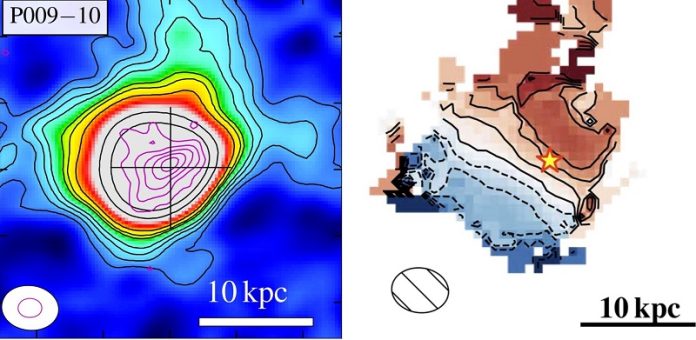
An international team of astronomers has discovered that dark matter played a major role in shaping galaxies in the early universe.
They found that two galaxies, located about 13 billion light years away, had halos dominated by dark matter.
Their study, published in The Astrophysical Journal, gives scientists new clues about how galaxies and supermassive black holes evolved over time.
What is dark matter?
Dark matter is a mysterious, invisible substance that makes up most of the universe’s mass. Scientists can’t see it directly, but they know it’s there because of the way it affects galaxies.
In the 1970s, astronomer Vera Rubin found the first strong evidence of dark matter.
She noticed that the outer parts of galaxies were rotating much faster than expected. This could only make sense if an invisible mass—dark matter—was pulling on them.
Led by researcher Qinyue Fei from Peking University and Professor John Silverman from the Kavli Institute for the Physics and Mathematics of the Universe, the team studied two distant galaxies using the Atacama Large Millimeter/submillimeter Array (ALMA).
They analyzed the motion of gas within these galaxies by studying the light emitted by ionized carbon (C+).
Their research focused on measuring how fast the gas moved in different parts of the galaxies.
They found that dark matter made up about 60% of the total mass in these galaxies. This means dark matter was already an important part of galaxy formation when the universe was still very young.
Past studies of early galaxies suggested that dark matter was not a major factor, as those galaxies showed a decrease in speed at their edges.
But Fei and Silverman’s team found something different—these distant galaxies had a flat rotation curve, meaning their gas moved at a constant speed, just like massive galaxies near Earth. This suggests that dark matter was shaping galaxies much earlier than previously thought.
This discovery helps scientists understand the link between dark matter and supermassive black holes in the early universe.
It also gives new insights into how galaxies formed and evolved into the structures we see today.
While dark matter remains a mystery, this research brings us one step closer to unlocking its secrets.
Source: KSR.



